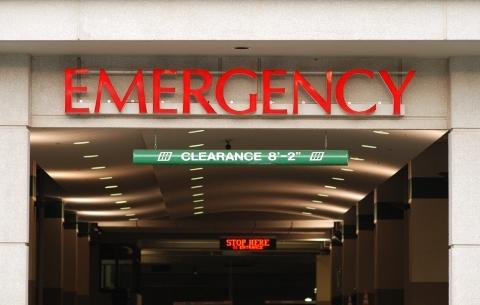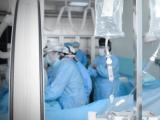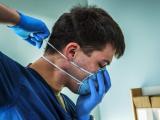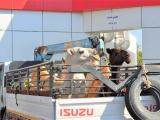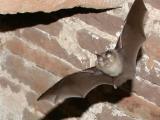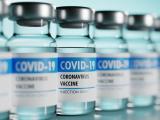South Korea's health ministry today reported 8 more MERS-CoV cases, all of them involving hospital transmission, boosting the total to 95 in an outbreak that has spread to even more of the nation's health facilities.
And an expert team from the World Health Organization (WHO) arrived in the country to conduct a joint mission with South Korean health officials to sift through the clinical, epidemiologic, and genetic features of the outbreak, with an eye toward making recommendations on how to curb the outbreak.
One death among latest cases
The eight newly diagnosed MERS-CoV (Middle East respiratory syndrome coronavirus) patients had contact with earlier confirmed patients at five hospitals, Yonhap News reported today, citing the country's health ministry.
The woman who died is a 68-year-old who had a chronic heart condition and was hospitalized at Samsung Medical Center in Seoul at the end of May, where she had contact with a MERS-CoV patient, according to Yonhap. Her death raises the outbreak's fatality count to seven.
Nine of the people sickened by MERS-CoV are in "unstable" condition and two have recovered, the health ministry said. It added that 29 hospitals have been affected by the outbreak, Yonhap reported.
Multiple hospital visits fueling spread?
At a media briefing today at WHO headquarters in Geneva, Peter Ben Embarek, PhD, a scientist with the WHO, said nearly 30 hospitals are now in various way part of the event, an increase from 24 reported yesterday. He added that a factor that may explain the outbreak's rapid expansion in South Korea is the practice of going to several hospitals following an initial diagnosis to get additional medical opinions.
Experts still don't know why MERS-CoV seems to spread more easily in hospital settings, Ben Embarek said, adding that the South Korean event generally resembles several hospital outbreaks seen in the Middle East, most notably one in Jeddah in 2014 that resulted in about 150 illnesses.
He said health officials expect to see more MERS-CoV illnesses in South Korea in the days ahead, with illnesses tapering off when all of the cases have been identified and isolated. Nearly 3,000 contacts are being followed, most of them in home isolation, Ben Embarek added.
Though all cases so far are part of the same transmission chain and have been in hospital settings, authorities aren't excluding the possibility that a few community cases will be seen, given the large number of hospitals and contacts involved, which he said wouldn't signal a dramatic change in the nature of the event. "That's a lot of people and a lot of interactions," Ben Embarek said.
He said South Korea's response to the outbreak has been very strong, with the health ministry sharing case numbers and patient details quickly. He added, however, that one gap early on was not communicating clearly to the public what the quickly growing outbreak numbers meant, which led to anxiety and fear.
WHO details 14 recent cases
The WHO today fleshed out the epidemiologic profiles of 14 MERS patients that South Korea reported on Jun 7. Conditions weren't listed for the patients, but one death was reported in the group, that of a 75-year-old man who had been in the emergency department (ED) of a hospital with several MERS-CoV cases. He died on Jun 5, the same day he tested positive for the virus.
Two patients are healthcare workers. One is a 32-year-old man who, 2 days before he got sick, visited the ED of a hospital that had reported several MERS-CoV cases. The other is a 37-year-old woman who worked in the ED of a hospital that had reported several cases.
One of the patients had shared a hospital ward with the index patient, while others had a variety of different hospital exposures. Some had stayed on the same ward or been in the same zone as one of the later confirmed patients, some were hospital visitors or caregivers, and some had visited the ED of a hospital with confirmed MERS cases.
Patients' ages range from 32 to 75 years old. They include 9 men and 5 women. Illness onsets range from May 29 to Jun 5.
More gene sequence findings
A group of WHO MERS-CoV lab experts and several international collaborators yesterday posted preliminary genetic findings based on their analysis of a sample from China's recent imported case, a South Korean business traveler, and one from a patient in South Korea. They posted their findings on the virological.org Web site.
They said that the two sequences cluster closest with viruses obtained during an outbreak in Riyadh in February and March, but they added that they saw enough differences to suspect that the South Korean viruses could have stemmed from a separate zoonotic event in the Arabian Peninsula.
"Given the travel history of the Korean index patient to other countries with recent MERS-CoV cases, the originating country cannot be determined with certainty," they wrote.
The index patient's recent travel included Bahrain, Qatar, Saudi Arabia, and the United Arab Emirates, and investigations are under way to determine how he was infected. He reportedly had no contact with camels and didn't have healthcare facility exposure.
The experts didn't find shared amino acid changes in the encoded spike of the Korean and Chinese samples, and they added that if there were a more transmissible virus emerging in South Korea due to a new spike variant, the change would have probably been seen in both sequences.
Researchers said the South Korean MERS viruses aren't likely to be different than those circulating in the Middle East and aren't likely to have a different virulence and transmission properties. They added, though, that more clinical, epidemiologic, and genetic data are needed to confirm those conclusions.
See also:
Jun 9 Yonhap News story
Jun 9 WHO press briefing audio file
Jun 9 WHO statement on 14 recent cases
Jun 8 preliminary virological.org report on South Korean MERS-CoV sequences
